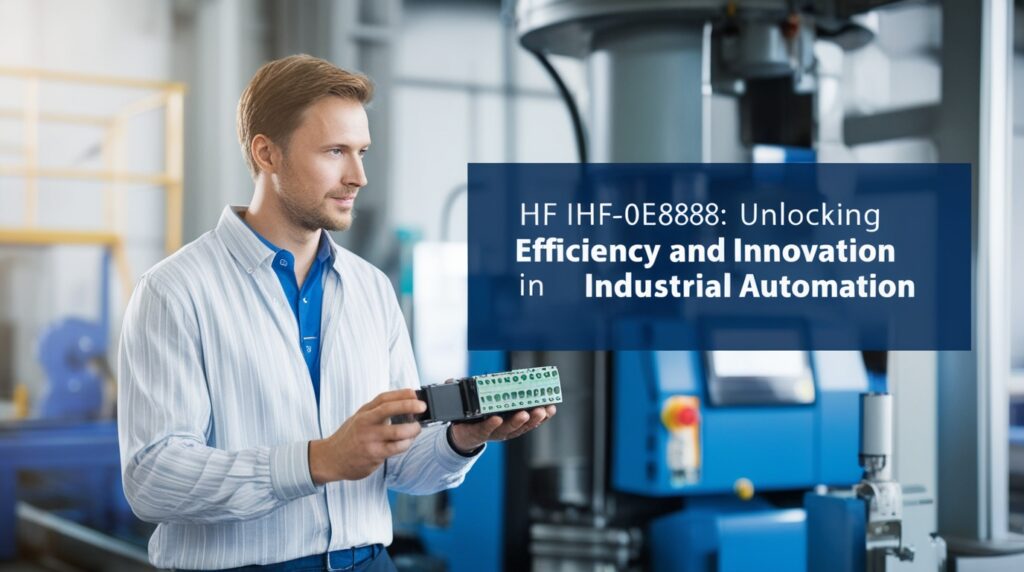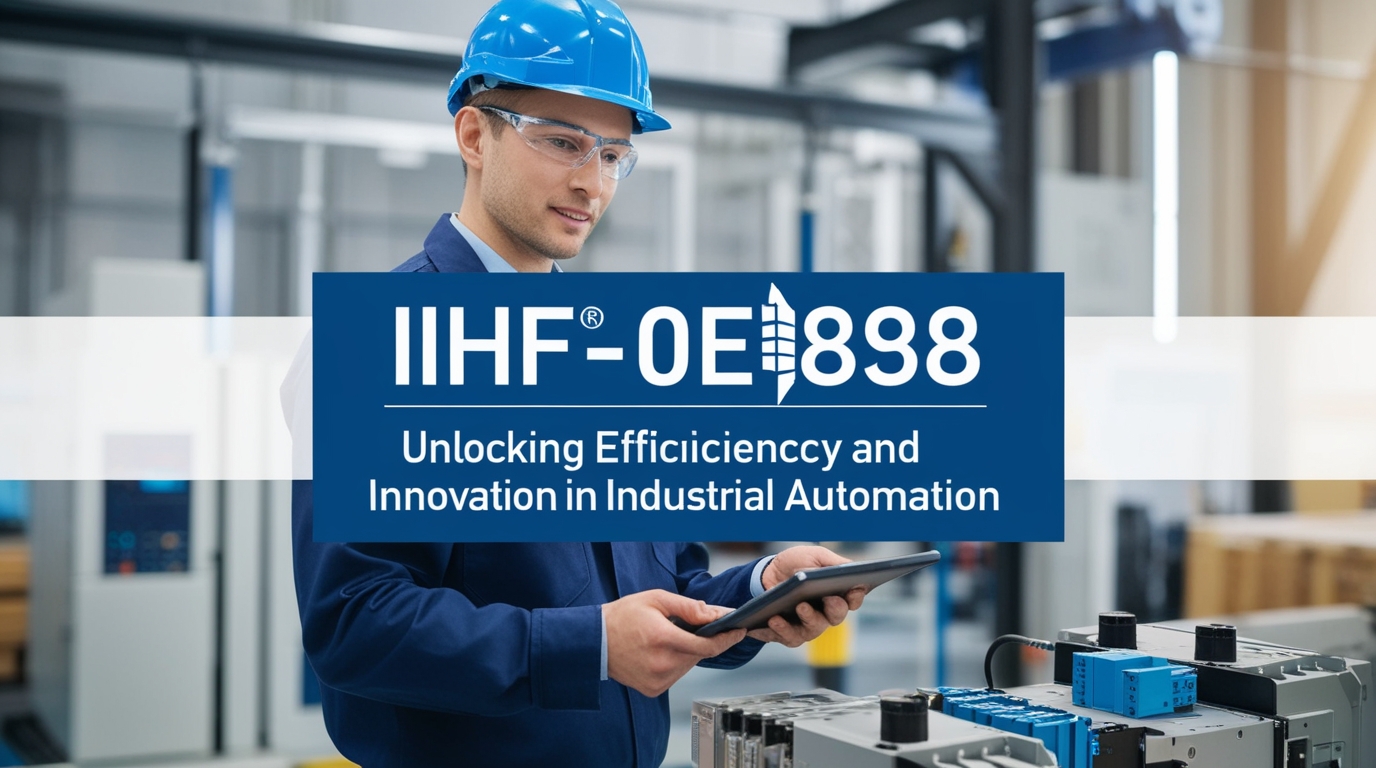IHF-0E898 is a technical identifier associated with a specific component or system within industrial automation and manufacturing sectors. While the exact nature of IHF-0E898 can vary depending on the context, it generally represents a standardized specification or model number crucial for ensuring consistency and reliability in industrial equipment and processes.
What is IHF-0E898?

IHF-0E898 refers to a specific identifier often associated with industrial systems, components, or technologies in automation, manufacturing, or engineering fields. While its exact application may vary depending on the industry, it typically represents a product, model, or specification that meets certain standards for performance, reliability, and integration.
Key Features of IHF-0E898
- High Reliability: Designed to ensure consistent uptime and durability under various conditions.
- Versatile Application: Compatible with diverse industrial environments.
- Advanced Integration: Easily integrates with modern industrial control systems.
- Energy Efficient: Optimized for minimal energy consumption without compromising performance.
Technical Specifications of IHF-0E898
Understanding the technical specifications of IHF-0E898 is essential for its effective implementation and integration into existing systems.
Hardware Requirements
- Processing Unit: Advanced 64-bit architecture optimized for real-time data handling.
- Memory Configuration: 32GB DDR4 with ECC support.
- Network Interface: Dual 10GbE ports with redundancy.
- Operating Temperature: -20°C to +70°C.
Performance Metrics
- Processing Speed: 2.4 million operations per second.
- Response Time: <0.5ms latency.
- Throughput: 1.2GB/s sustained data transfer.
- Reliability: 99.999% uptime guarantee.
Applications of IHF-0E898
IHF-0E898 finds applications across various industries due to its versatility and robust design.
Manufacturing Integration
In manufacturing environments, IHF-0E898 ensures seamless integration with existing production systems, enhancing efficiency and precision.
Quality Control
The system’s advanced algorithms enable real-time defect detection, automated quality assurance protocols, statistical process control, and predictive maintenance scheduling.
Installation Requirements
Proper installation of IHF-0E898 is crucial for optimal performance.
Hardware Prerequisites
- Power Supply: 220-240V AC, 50/60Hz.
- Cooling: Forced air cooling system.
- Mounting: Standard 19-inch rack compatible.
- Space Requirements: 4U height.
Environmental Considerations
- Ambient Temperature: 18-25°C.
- Humidity: 45-55% non-condensing.
- Air Quality: ISO Class 8 or better.
- EMI Protection: Shielded installation environment.
Maintenance and Support
Regular maintenance ensures the longevity and reliability of IHF-0E898.
Regular Maintenance Schedule
- Daily: System health checks.
- Weekly: Performance optimization.
- Monthly: Calibration procedures.
- Quarterly: Firmware updates.
Troubleshooting Guidelines
- Communication Errors: Verify network configuration.
- Performance Degradation: Clear cache and optimize the system.
- Hardware Alerts: Conduct component diagnostics.
- Firmware Issues: Check version compatibility.
Security Features
Ensuring the security of IHF-0E898 is paramount.
Access Control
- Authentication: Multi-factor authentication support.
- Access Management: Role-based access control.
- Audit Logging: Comprehensive audit trails.
- Remote Access: Secure remote access protocols.
Data Protection
- Encryption: 256-bit AES encryption.
- Secure Boot: Ensures system integrity at startup.
- Hardware Security Module: Integration for enhanced security.
- Regular Updates: Timely security patches.
Future Developments
The evolution of IHF-0E898 is geared towards incorporating emerging technologies.
Planned Enhancements
- AI Integration: AI-powered optimization algorithms.
- Cloud Capabilities: Enhanced cloud integration.
- Protocol Support: Expanded protocol compatibility.
- Energy Efficiency: Improved energy management features.
Industry Impact
IHF-0E898 continues to shape industrial automation by reducing operational costs, improving production quality, enhancing system reliability, and providing greater process visibility.
Integration Guidelines
Seamless integration of IHF 0E898 into existing systems requires adherence to specific guidelines.
System Requirements
- Control Systems: Compatibility with major industrial control systems.
- Network Infrastructure: Meets network specifications.
- Software Dependencies: Compliance with required software.
- Hardware Interfaces: Alignment with hardware interface requirements.
FAQs
1. What industries use IHF-0E898?
IHF-0E898 is widely used in manufacturing, energy, logistics, and automation industries.
2. What are the technical specifications of IHF 0E898?
Specifications vary by model but typically include robust processing units, high-speed network interfaces, and compatibility with industrial protocols.
3. How does IHF-0E898 enhance productivity?
It automates processes, reduces errors, and integrates seamlessly with control systems, enabling smoother operations.
4. What maintenance is required for IHF 0E898?
Regular system checks, firmware updates, and hardware inspections ensure optimal performance.
5. Is IHF 0E898 compatible with older systems?
Yes, it is often designed to integrate with legacy systems while maintaining high performance.
6. How can I troubleshoot issues with IHF 0E898?
Common troubleshooting steps include checking network configurations, updating firmware, and consulting the user manual for error codes.
Conclusion
IHF 0E898 stands out as a reliable and efficient solution for industrial automation and management. Its versatility, durability, and advanced integration capabilities make it an essential component in modern industrial systems. Whether in manufacturing, energy management, or data processing, IHF 0E898 helps industries achieve higher efficiency and lower costs, paving the way for a more streamlined and productive future. Implementation Steps.










